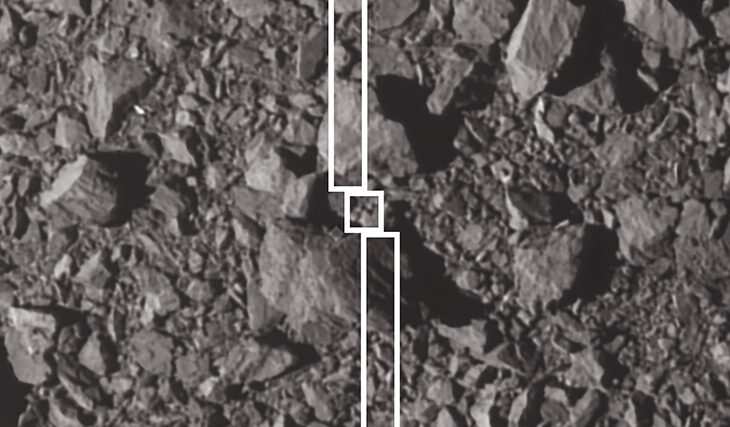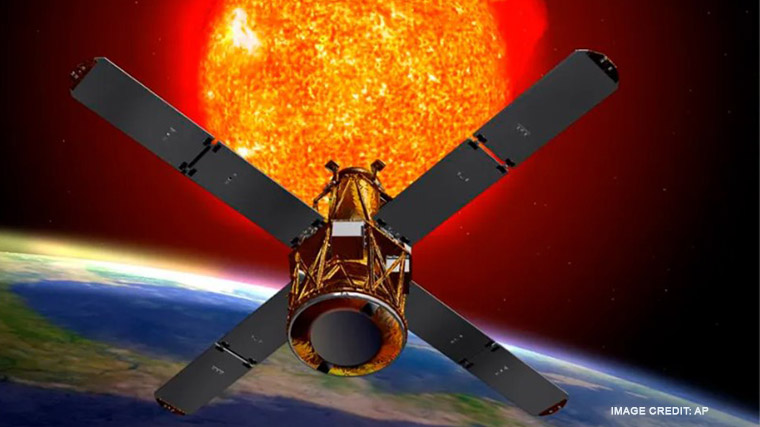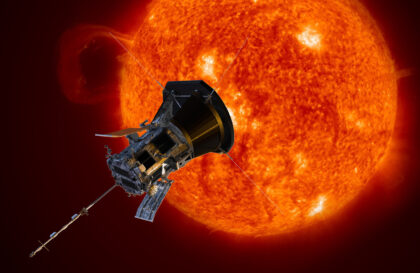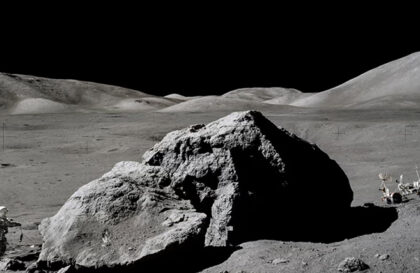NASA’s DART (Double Asteroid Redirection Test) is a mission designed to test the ability to redirect the trajectory of an asteroid using a kinetic impactor, which in the simplest sense means the collision of one thing with another – in this case a spacecraft with an asteroid.
The mission’s target was the Didymos binary asteroid system, consisting of a larger asteroid and a smaller satellite.
Launched from Earth on November 24, 2021, the DART spacecraft successfully collided with Dimorphos on September 26, 2022, at 23:14 UTC changing its course and shortening its orbit by 33 minutes plus or minus one minute, well above the predetermined success threshold of 73 seconds. DART surpassed this minimum benchmark by a factor of more than 25.
Following the collision, the team’s primary focus is to measure the momentum transfer efficiency of DART’s collision with the target at approximately 14,000 miles (22,530 kilometers) per hour. This includes further analysis of the “ejection” – the many tons of asteroidal rock dislodged and thrown into space by the impact. The key to the kinetic impact is that the push to the asteroid comes not only from the collision of the spacecraft but also from the recoil of this ejection. The collision caused an instantaneous deceleration of Dimorphos’ velocity along its orbit by about 2.7 millimeters per second, further indicating that the recoil from the ejection played an important role in amplifying the change in momentum directly imparted to the asteroid by the spacecraft. This momentum change was magnified by a factor of 2.2 to 4.9 and was significantly larger than the momentum change from the DART spacecraft alone.
Why is this mission so important?
Because asteroids are dangerous.
Chicxulub Impact: About 66 million years ago, a massive asteroid about 10 kilometers (6.2 miles) in diameter crashed into what is now the Yucatan Peninsula in Mexico. This impact is believed to have caused the extinction of non-avian dinosaurs and many other species, marking the end of the Cretaceous period and the beginning of the Paleogene period.
Tunguska Event: In 1908, a massive explosion occurred over the Tunguska region of Siberia, Russia. Although no crater was found, it is believed that the explosion was caused by the ejection into the atmosphere of a fragment of a relatively small asteroid or comet about 50-60 m (160-200 ft) in diameter. The explosion flattened about 2,000 square kilometers (770 square miles) of forest and released energy equivalent to several megatons of TNT.
Barringer Crater (Meteor Crater): This impact crater in Arizona, USA, was formed about 50,000 years ago by the impact of a nickel-iron meteorite about 50 m (164 ft) in diameter. The crater is about 1.2 km (0.75 mi) in diameter and 170 m (560 ft) deep. It serves as a prime example of a relatively recent impact event.
Chelyabinsk meteor: In 2013, a relatively small asteroid about 20 m (66 ft) in diameter entered Earth’s atmosphere over the Chelyabinsk region in Russia. The resulting explosion created a massive shock wave in the air that damaged more than 7,000 buildings and injured more than 1,500 people.
Sikhote-Alin meteorite: In 1947, a powerful fireball passed over the Sikhote-Alin mountain range in Russia and exploded. The meteorite was estimated to have a diameter of about 17 m (56 ft) and a mass of about 100,000 tons. The explosion caused a series of deafening detonations and scattered numerous fragments over a wide area.
A kinetic impactor mission like DART was effective in altering the asteroid’s trajectory, which is a big step toward preventing future asteroid collisions with Earth.
DART is a joint project between NASA and the Johns Hopkins Applied Physics Laboratory and is the first step toward developing kinetic impactor technology as an operational capability for planetary defense.
Image credit:
https://www.nasa.gov






